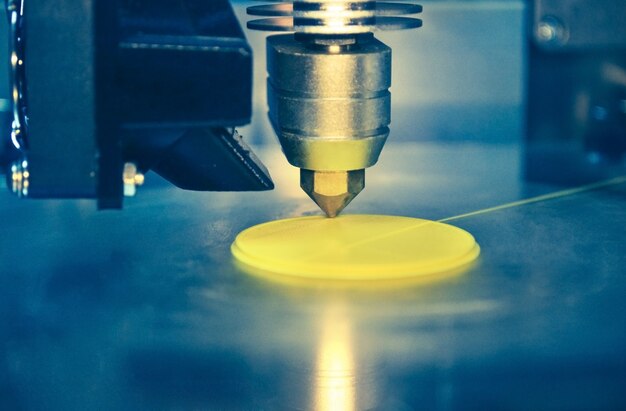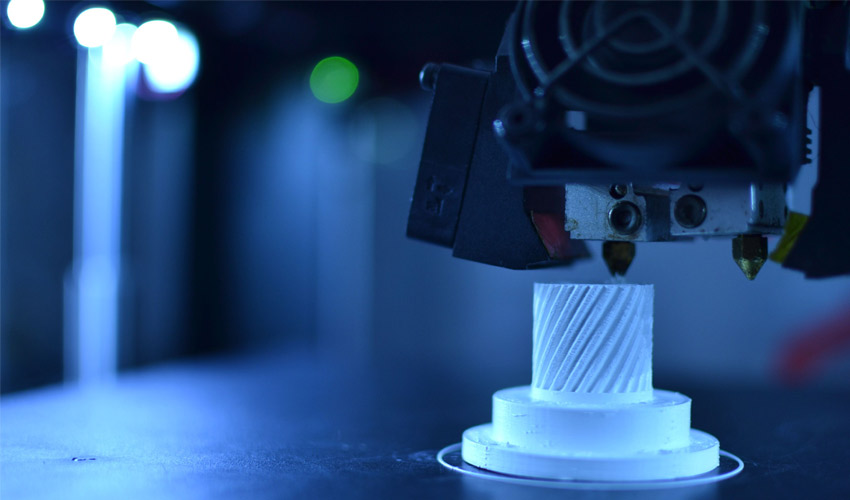What is 3d printing?
3D printing is basically a manufacturing technique used to create three-dimensional objects.
For this, basically a three-dimensional object is designed in digital format. After this it is obtained in physical form through 3D printer.
Printers used in 3D printing are based on additive manufacturing technology.

While a normal printing machine requires ink and pages, in this printing machine the size, color etc. of the object to be printed is determined and materials are added accordingly.
applications of 3d printing ;
3D printing has the potential to be a game changer for the manufacturing sector due to its three new features, namely short lead time, freedom of product design and low cost.
This will free up a large number of workers who can be given work in other sectors and new doors of possibilities can be opened.
In the health sector, this technology is being used for many purposes, including tissue engineering, prosthetics and manufacturing of artificial human organs. Apart from this, this will prove to be a revolutionary initiative in the fields of manufacturing, education, space and security.
Global scenario related to 3d printing:
Globally, in the year 2017, the global 3D printing market had reached the level of approximately $7.01 billion. Talking about the use of 3D printing at industrial level, its market share in the year 2019 was about 80 percent.
During the year 2018, 3D printing was used most in hardware, followed by software and least used in the service sector.
In the year 2018, North America stood first with a market share of more than 37 percent due to the widespread use of 3D printing (Additive Manufacturing).
‘A soft silicone heart’ has been developed by Swiss scientists which works almost the same as the human heart. Apart from this, scientists of China and America jointly developed embryonic stem cells using 3D printing technology, while scientists of United Kingdom have created the world’s first cornea using this technology.
A team of American researchers has created a ‘sponge’-like structure that fits on the palm through 3D printing technology, which can prove to be effective in reducing pollution. A team of researchers created a ‘sponge’-like plastic mold by adding nano particles of the chemical agent titanium dioxide during the 3D printing process. Which has the potential to eliminate pollution from water, air and agricultural sources.
3D Printing and Prospects in India:
With an aim to increase manufacturing capabilities in India, the country’s leading manufacturers have set up 3D printing assembly lines and distribution centers with foreign technology firms.

Price Waterhouse Coopers (PWC)’s report titled ‘The Global Industry 4.0’ noted that approximately 27 per cent of industries have invested in additive manufacturing technologies during 2016, indicating that There is a possibility of widespread use of 3D printing in India’s industrial sector.
Currently, India is the fastest growing developing country where initiatives like ‘Make in India’, ‘Digital India’ and ‘Skill India’ have been launched with the aim of increasing investment opportunities and strengthening the manufacturing capabilities of the country. In which 3D printing can play an important role.
Its use will be important in promoting industrial development in small towns and the use of this technology in the field of traditional and medium enterprises will not only prove to be lower cost and more efficient but will also save time.
The use of this technology in sectors like aviation and automotive can revolutionize the transportation sector, which will not only increase production capacity but also reduce the quality of goods produced and the adverse effects on the environment during manufacturing, which are detrimental to the country’s health. It will also be in line with global commitments regarding the environment.
